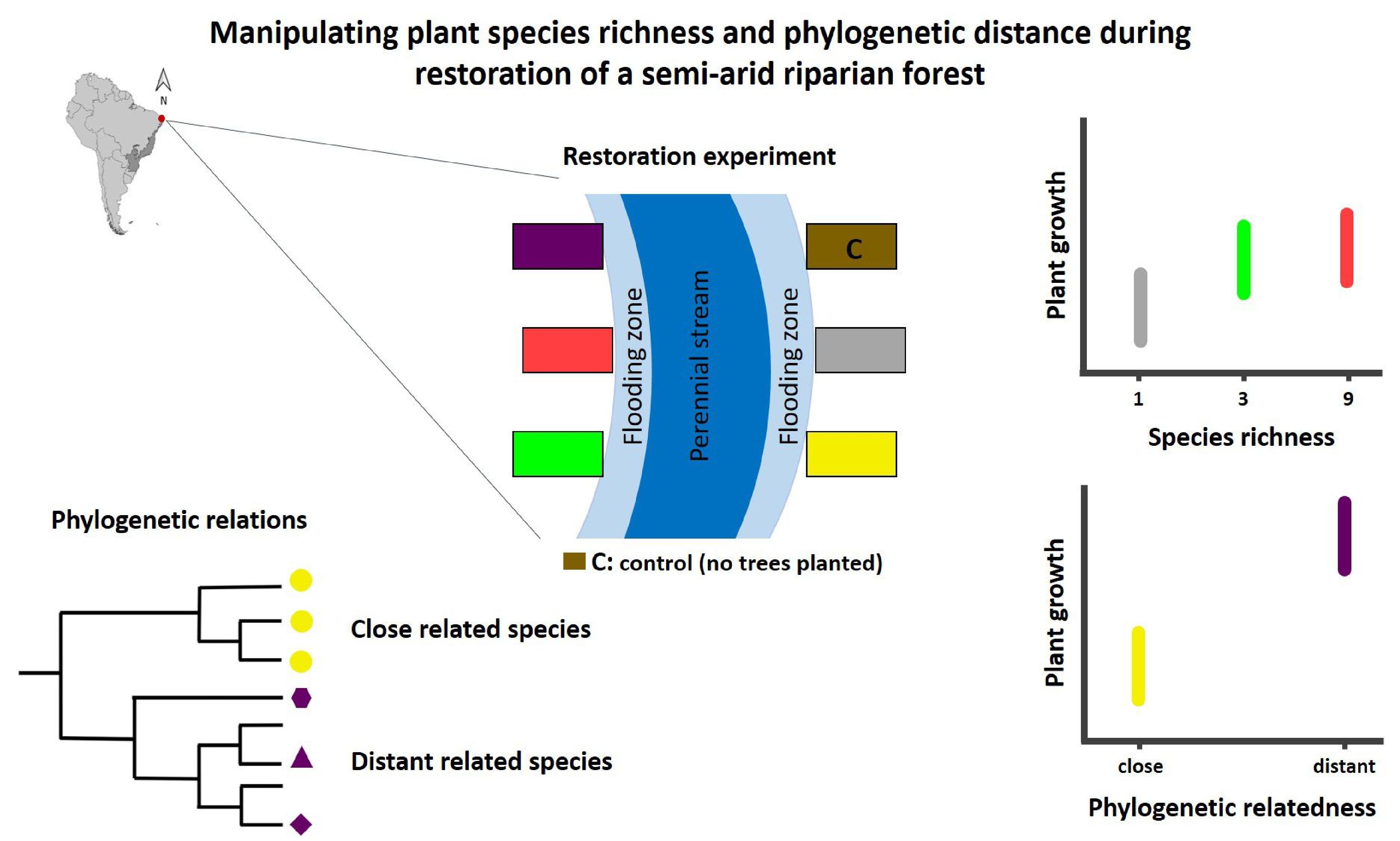Leonardo H. Teixeira and colleagues share their latest research investigating the influence of species richness and phylogenetic relatedness during early restoration of a riparian forest in north-eastern Brazil.
Restoration projects offer the opportunity to locally assess the effects of plant diversity on the assembly and functioning of restored ecosystems.
In semi-arid areas of north-eastern Brazil, the extremely harsh environmental conditions are limiting plant establishment from restoration projects, highlighting the need to investigate the effects of biodiversity on the plant development during restoration by identifying the suitable plant species and combinations that would contribute to improved restoration outcomes.

One of the factors that may contribute to restoration outcomes is phylogenetic diversity – a measure of biological diversity based on the evolutionary relations among a group of organisms; i.e. their phylogeny – as it may be a surrogate for functional diversity, but little is known about its effects on plant survival and performance during restoration. To demonstrate the importance of phylogenetic relationships of the trees planted for restoring a degraded semi-arid riparian forest in NE Brazil, we implemented an experiment which we describe in our latest article.
The experiment
Different combinations of tree species were planted along the two margins of a perennial stream in Monte Alegre (Rio Grande do Norte) to create different levels of species richness (i.e. the number of different species of trees planted) and phylogenetic relatedness. The inclusion of phylogenetic information during restoration design (via simply plotting a phylogenetic tree to guide species selection) can produce positive outcomes in the restoration of degraded ecosystems. This approach was very simple as it only demands a list of species names and a computer with internet access to plot the phylogenetic tree using a free online tool, such as the PhyloT v2.
In terms of feasibility, for any potential stakeholders who wish to use such techniques, we consider this to be a much more straightforward approach than, for instance, the extraction of many (and sometimes, hard to gather) functional traits and calculations of functional diversity metrics for its inclusion in the study design for restored communities.

All in all, we used phylogenetic information on 47 species of trees naturally occurring in the study area surroundings. To establish the experiment, we randomly selected nine plant species; three per branch of the phylogenetic tree created with all plants previously identified. Afterwards, we defined five levels of diversity to compose the experiment: (i) no planting, (ii) monoculture, (iii) three phylogenetically related species, (iv) three phylogenetically distant species, and (v) all nine species together.
In September 2015, we planted 1,656 saplings (20–50 cm; 184 per species) across 96 experimental plots (12 m × 10 m) implemented in both margins of the perennial stream. Afterwards, we monitored plant mortality and growth in the restoration experiment for two consecutive years (2016 and 2017).

Via an innovative and feasible approach, we were able to disentangle the effects of species richness from those of phylogenetic relatedness as well as differentiate the effects of each experimental community compositions. Although we did not detect any biodiversity effects on the survival of plants in the first two years of restoration, we show that phylogenetic distance amongst trees lead to increased plant growth when environmental conditions were favourable (i.e. when plants were growing near the stream and had more access to water), possibly due to the presence of functionally different species that used the available resources in a more complementary way.
We thus conclude that the inclusion of phylogenetic information during restoration planning can improve the outcomes of restoration projects. We believe that our study provides important insights into the successful restoration of degraded areas in tropical forests and positively contributes to science-based restoration.
Read the full article: “Phylogenetic distance controls plant growth during early restoration of a semi-arid riparian forest” in Issue 3:4 of Ecological Solutions and Evidence.
